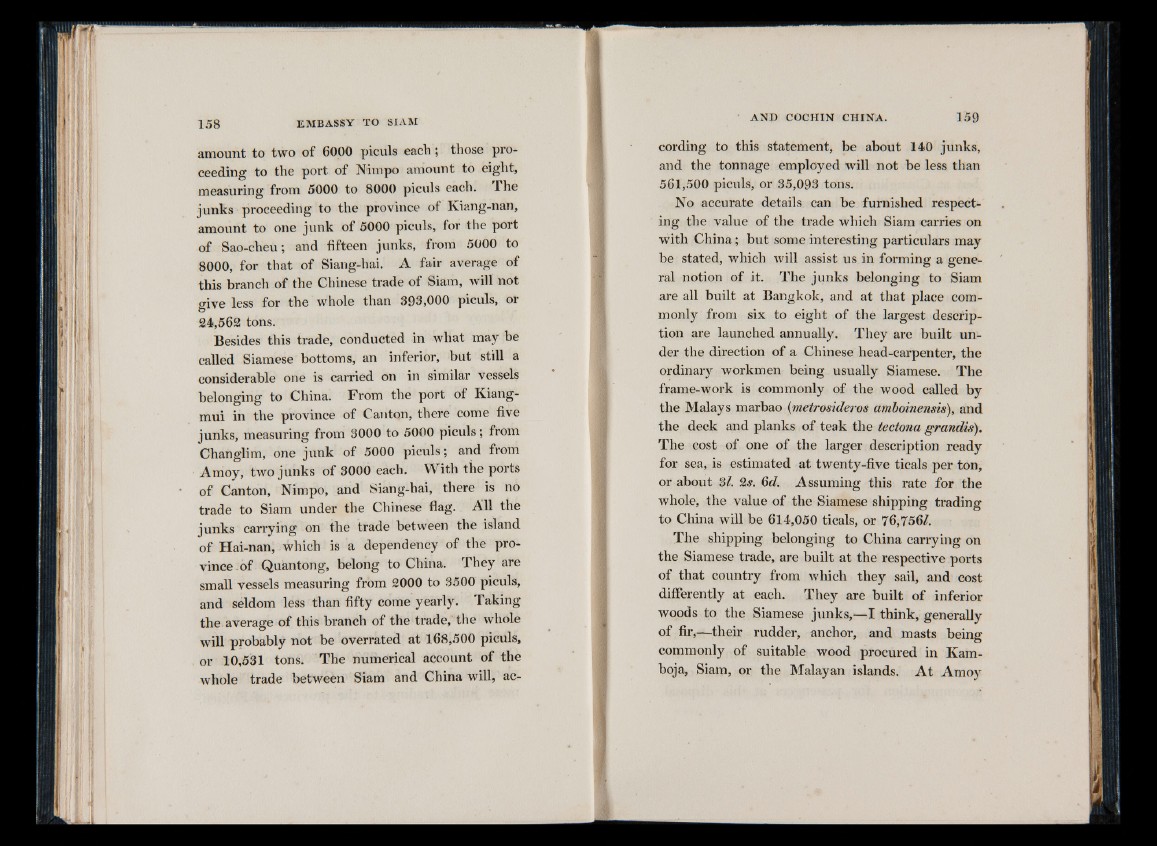
amount to two of 6000 piculs each ; those proceeding
to the port of Nimpo amount to eight,
measuring from 5000 to 8000 piculs each. The
junks proceeding to the province of Kiang-nan,
amount to one junk of 5000 piculs, for the port
of Sao-cheu; and fifteen junks, from 5000 to
8000, for that of Siang-hai. A fair average of
this branch of the Chinese trade of Siam, will not
oive less for the whole than 393,000 piculs, or
24,562 tons.
Besides this trade, conducted in what may be
called Siamese bottoms, an inferior, but still a
considerable one is carried on in similar vessels
belonging to China. From the port of Kiang-
mui in the province of Canton, there come five
junks, measuring from 3000 to 5000 piculs; from
Changlim, one junk of 5000 piculs; and from
Amoy, two junks of 3000 each. With the ports
of Canton, Nimpo, and Siang-hai, there is no
trade to Siam under the Chinese flag. All the
junks carrying on the trade between the island
of Hai-nan, which is a dependency of the province.
of Quantong, belong to China. They are
small vessels measuring from 2000 to 3500 piculs,
and seldom less than fifty come yearly. Taking
the average of this branch of the trade, the whole
will probably not be overrated at 168,500 piculs,
or 10,531 tons. The numerical account of the
whole trade between Siam and China will, according
to this statement, be about 140 junks,
and the tonnage employed will not be less than
561,500 piculs, or 35,093 tons.
No accurate details can be furnished respecting
the value of the trade which Siam carries on
with China; but some interesting particulars may
be stated, which will assist us in forming a general
notion of it. The junks belonging to Siam
are all built at Bangkok, and at that place commonly
from six to eight of the largest description
are launched annually. They are built under
the direction of a Chinese head-carpenter, the
ordinary workmen being usually Siamese. The
frame-work is commonly of the wood called by
the Malays marbao (metrosideros amboinensis), and
the deck and planks of teak the tectona grandis).
The cost of one of the larger description ready
for sea, is estimated at twenty-five ticals per ton,
or about 31. 2s. 6d. Assuming this rate for the
whole, the value of the Siamese shipping trading
to China will be 614,050 ticals, or 76,756/.
The shipping belonging to China carrying on
the Siamese trade, are built at the respective ports
of that country from which they sail, and cost
differently at each. They are built of inferior
woods to the Siamese junks,—I think, generally
of fir,—their rudder, anchor, and masts being
commonly of suitable wood procured in Kam-
boja, Siam, or the Malayan islands. A t Amoy